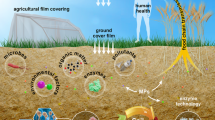Abstract
Waste landfill liner has been developed with a variety of materials, but the landfill liner and cover material have not been developed in consideration of the local conditions. In order to build a cost effective municipal solid waste (MSW) landfill site, it is necessary to develop technology that utilizes materials suitable for local characteristics as liner. The purpose of this study is to develop an amended compacted clay liner (CCL) by proportionally mixing construction waste soil called “recycled soil” with small amount bentonite powder as well as polymer powder. Permeability and strength characteristics of recycled soil-bentonite mixture were analyzed through laboratory test and then compare this mixture with characteristics of marine clay-bentonite mixture. The characteristics of strength and permeability were analyzed by applying different mixing ratios with adjustment of polymer and bentonite ratios in consideration of its proportion of bentonite’s weight to improve economic efficiency and increase the strength of recycled soil-bentonite mixture. Finally, the proper mixing ratio of recycled soil-4% bentonite-0.28% polymer mixture was determined considering economical efficiency. The mixture was confirmed to be suitable as lining material based on the results of dry shrinkage test, free swelling test, and soil contamination test. In this study, it is proposed the mixing ratio of recycled soil, bentonite, and polymer as a minimum ratio that satisfies the standard of hydraulic conductivity(1 × 10−7 cm/sec) on the waste management law and unconfined compressive strength (500 kPa) on the specification of construction of waste landfill liner.













Similar content being viewed by others
References
Korea Ministry of Environment (2014) National waste statics survey. Korea Ministry of Environment, Seoul
Korea Construction Recycling Association (2014) Preparation and implementation of measures to improve the treatment system to promote the high value-added recycling of construction waste. Korea Construction Recycling Association, pp 1–54
Korea Ministry of Environment (1999) Environment regulation of the waste construction act. Korea Ministry of Environment, Seoul
Lee HM (2020) Applicability of recycled soil mixed with bentonite and polymer as a waste landfill liner. Ph. D thesis, Incheon National University, Incheon
Brindley GW, MacEwan DMC (1953) Structural aspects of the mineralogy of clays and related silicates: ceramics a symposium. J Br Ceram Soc 15–59
Das BM (1983) Advanced soil mechanics. McGraw–Hill International editions
Choi JH, Yang HS, Yeon JH (2018) Setting time characteristics of high-strength mortar modified with superabsorbent polymers. Proc Korea Concr Inst Conf 30(2):539–540
Cho JB, Hyun JH, Cho ST, Choi KH (2002) Utilization of dredged mud in landfill liner system. J Korean Soc Environ Eng 24(5):869–877
KS F 2502 (2014) Standard test method for sieve analysis of fine and coarse aggregates. Korean Standards Association, Seoul
KS F 2320 (2014) Standard test method for sieve analysis of fine and coarse aggregates. Korean Standards Association, Seoul
KS F 2301 (2015) Preparing method of distributed soil samples. Korean Standards Association, Seoul
KS F 2309 (2019) Standard test method for determining the amount of material finer than No. 200 sieve of soils by washing. Korean Standards Association, Seoul
KS F 2303 (2020) Standard test method for liquid limit and plastic limit of soils. Korean Standards Association, Seoul
KS F 2576 (2020) Standard test method for impurity contents of recycled aggregate. Korean Standards Association, Seoul
KS F 2314 (2018) Standard test method for soil unconfined compression test of soils. Korean Standards Association, Seoul
Ling CL, Craig HB (2000) Effect of wet-dry cycling on swelling and hydraulic conductivity of GCLs. J Geotech Geoenviron Eng 126(1):40–49
Author information
Authors and Affiliations
Corresponding author
Additional information
Publisher's Note
Springer Nature remains neutral with regard to jurisdictional claims in published maps and institutional affiliations.
Rights and permissions
About this article
Cite this article
Shin, E.C., Kang, J.K. & Lee, H.M. Applicability of Recycled Soil Mixed with Bentonite and Polymer as a Waste Landfill Liner. Indian Geotech J 51, 451–459 (2021). https://doi.org/10.1007/s40098-021-00537-4
Received:
Accepted:
Published:
Issue Date:
DOI: https://doi.org/10.1007/s40098-021-00537-4




